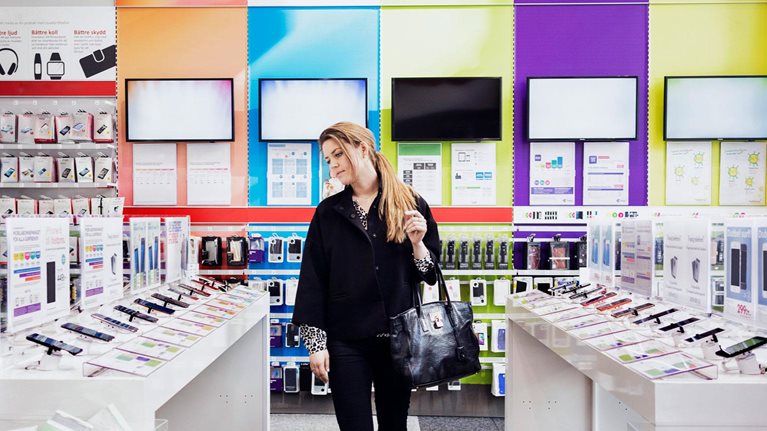The next generation of wireless connectivity has arrived: 5G has the capacity to support a huge number of connections simultaneously while improving speed, latency, reliability, and power consumption for handsets and Internet of Things (IoT) devices. As with the transition from 3G to 4G, there are many uncertainties. Where is the value coming from, and who is going to capture it? What are the use cases where 5G performance enhancements will generate the most value and demand? And which applications will most benefit from 5G?
To provide greater clarity on future value pools for advanced-electronics companies and industrials, we investigated the 5G market through 2030, looking at more than 150 potential business-to-business (B2B) and business-to-consumer (B2C) use cases. We concentrated on 5G use cases related to the IoT in the business sphere, rather than the more predictable market for consumer handsets, because companies are still uncertain about the B2B space. Our findings are captured in a new report, The 5G era: New horizons for advanced electronics and industrial companies; this article is an excerpt summarizing the key takeaways.
An evolving market
Our research suggests that the adoption of 5G will likely happen in waves in major markets. Use cases that require enhanced mobile broadband (EMBB) are likely to reach mass adoption first, followed by those that rely on ultrareliable, low-latency communication (URLLC). A few years after that, there should be an uptick in use cases requiring massive machine-type communication (MMTC) (Exhibit 1).

As new use cases gain traction, it is expected that B2B 5G IoT unit sales will soar. In 2025, more than 27 million units could be sold. We anticipate that most of these—68 percent—will be for use cases that require 5G to achieve distinctive performance enhancements (Exhibit 2). The remainder of estimated sales will occur because companies want to ensure future readiness as 5G becomes the new standard. By 2030, sales of B2B 5G IoT units could rise to about 250 million annually, but the source of demand will probably change. New standard use cases should account for about 82 percent of sales that year, with only 18 percent linked to distinctive use cases.

Of the 45 million units expected to be sold in 2030 for distinctive use cases, about half the demand—approximately 22 million units—likely will come from Industry 4.0 applications. Manufacturing is expected to be a particularly strong driver, with some of the most important distinctive use cases being related to automated guided vehicles, 3-D bin picking, real-time process control, augmented reality, and vision-quality checks.
Would you like to learn more about our Advanced Electronics Practice?
The 5G IoT module and component market
We expect IoT players to offer three types of 5G modules for B2B use cases:
- standard modules for classic 5G scenarios that require EMBB
- special-purpose modules designed for specific use cases that require URLLC
- 5G LPWA modules for long-distance communication, such as transmissions from sensors with low data rates
In the B2B sphere, we expect total revenues for 5G IoT modules to increase from about $180 million in 2022 to almost $10 billion by 2030. During the first years of 5G, standard modules will probably be more popular than special-purpose and 5G LPWA modules and thus generate the highest revenues. 5G LPWA modules should be the largest growth driver after 2025 and account for almost 30 percent of total 5G IoT module revenues in the B2B sector by 2030.
As module sales increase, component providers will benefit. The greatest gains will go to providers of radio chips and application processors—the active components—with B2B revenues for this group expected to reach about $560 million by 2025 and $4.1 billion by 2030. Next in line should be providers of passive components, such as antennae; they will likely see revenues rise from $188 million to $1.3 billion over the same period. Providers of testing, assembly, and packaging should also see revenue increases.
Next steps for industrials
To win in this market, industrials should first determine which distinctive use cases are most popular with the B2B customers that are early 5G adopters. They should then determine how they must enhance their products to meet the requirements of these use cases. To develop a better understanding of market developments and customer needs, industrials should ensure that their salespeople are trained to identify emerging 5G B2B use cases, determine any necessary enhancements to the product portfolio or product features, and communicate their findings to product-portfolio management. With much uncertainty remaining about 5G B2B use-case adoption, including timing, industrials should frequently review their portfolio of 5G-enabled product offerings.

A 5G manifesto for the CEO
Next steps for manufacturing players
Manufacturing players that want to move ahead with 5G should first create a long list of potential B2B use cases, noting whether they are distinctive or designed to satisfy new standards. They should then prioritize distinctive use cases with the highest value; additional use cases can be rolled out after 5G coverage is widely available. Given the breadth and complexity of 5G applications, manufacturers may require partners to develop their solutions and secure the best return on investment.
Download The 5G era: New horizons for advanced electronics and industrial companies, (PDF–764KB) the full report on which this article is based.

